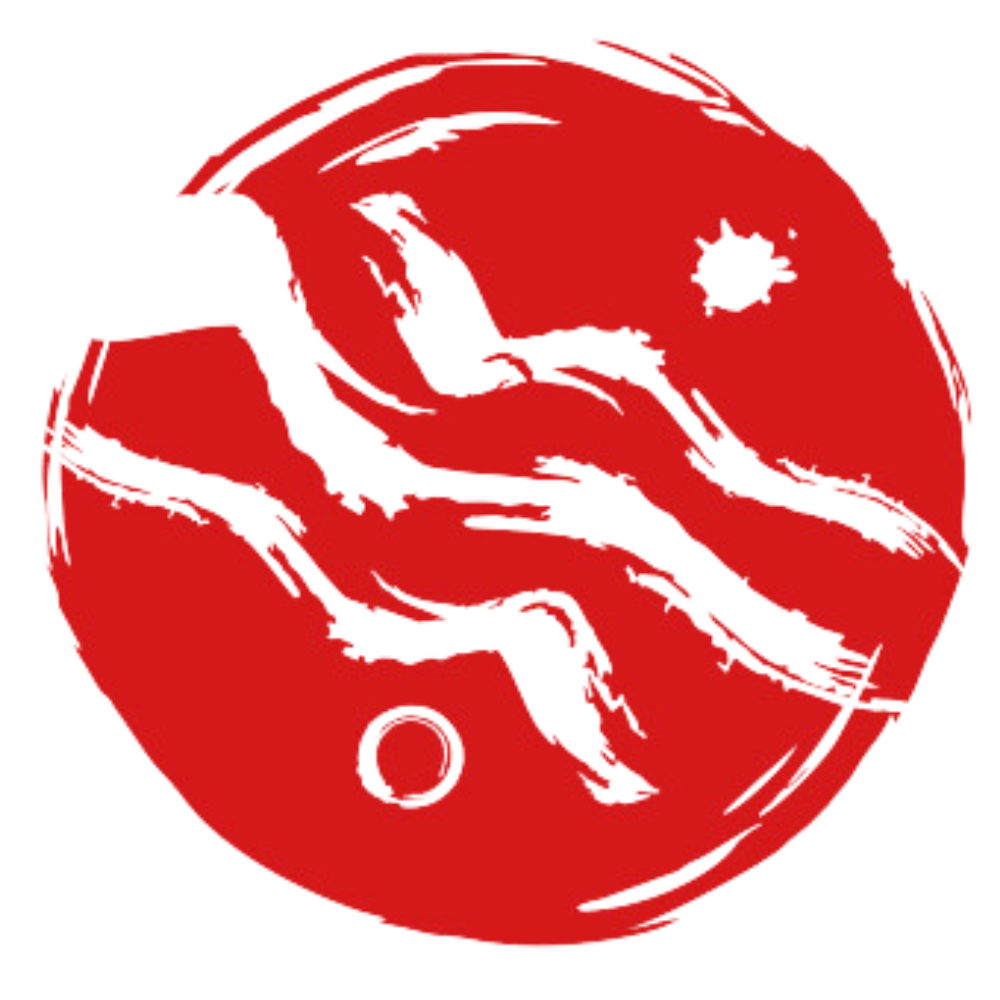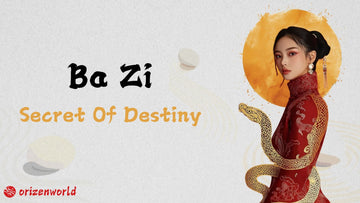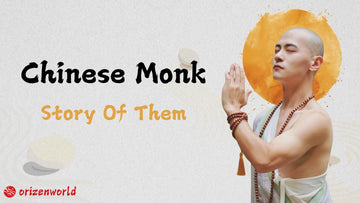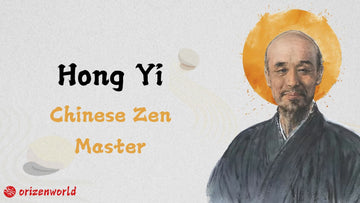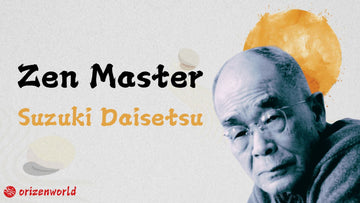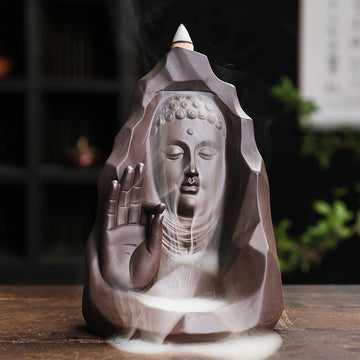Although China is a communist country, often associated with atheism, many Chinese people believe in destiny, a concept deeply rooted in their culture. They believe destiny is determined at birth, guided by the ancient theory of BaZi (八字). Often likened to Morse code, BaZi connects closely with Bagua, Yin-Yang, and the Chinese zodiac. By interpreting this intricate "code," one can theoretically uncover secrets about their destiny, such as personality traits, life paths, and future opportunities.
While this remains a theoretical perspective, BaZi continues to fascinate and influence many. In this article, we’ll explore the fundamentals of BaZi, its ties to Chinese metaphysics, and how it claims to unlock the mysteries of destiny.
BaZi, also known as the Four Pillars of Destiny (四柱), is a traditional Chinese metaphysical system that analyzes a person's fate and character based on the year, month, day, and hour of their birth. It uses the combination of Heavenly Stems (天干) and Earthly Branches (地支) to form eight characters—hence the term "BaZi" (八字), meaning "eight characters." These eight characters reveal insights into an individual's personality, potential, and life path.
The BaZi system consists of Heavenly Stems (甲、乙、丙、丁、戊、己、庚、辛、壬、癸) and Earthly Branches (子、丑、寅、卯、辰、巳、午、未、申、酉、戌、亥). The interaction between these Stems and Branches forms the foundation of BaZi, representing the dynamic flow of energy in a person's life.
In Chinese culture, BaZi is not something most people actively explore until significant life events arise, such as marriage. One common practice is the matching of BaZi between potential spouses to ensure compatibility, as there is a saying "八字不合," meaning that two people’s destinies are not aligned. Therefore, before marriage, many individuals consult a BaZi expert to assess whether their birth charts are harmonious or conflicting, which influences their decision-making.
To calculate your BaZi (生辰八字), or Four Pillars of Destiny, you need to determine the Heavenly Stems (天干) and Earthly Branches (地支) for your birth year, month, day, and time. Let’s take an example: if you were born on May 6, 2010, at 8 AM, your BaZi would be calculated as follows:
Year Pillar (年柱): To find the Year Pillar, you use the Chinese lunar calendar’s Heavenly Stems and Earthly Branches corresponding to the year. For 2010, the lunar year was 庚寅 (Geng Yin), so your Year Pillar is 庚寅. The start of the year is based on the Chinese New Year, and the year is divided by the solar terms, with the Spring Festival (Lichun) marking the beginning of the new year.
Month Pillar (月柱): The Month Pillar is calculated using the Chinese solar calendar and is based on the lunar year’s divisions into 12 months, defined by solar terms. For example, May falls within the 辰月 (Chen month), and since you were born in the year of 庚寅, your Month Pillar is 庚辰.
Day Pillar (日柱): The Day Pillar represents the specific day of your birth, which follows the same logic. For May 6, 2010, the Day Pillar would be 丙辰 (Bing Chen).
Hour Pillar (时柱): The Hour Pillar is derived by the time of day, using the Earthly Branches, divided into 12 two-hour segments. Since you were born at 8 AM, your Hour Pillar is 壬辰 (Ren Chen).
Thus, your BaZi would be 庚寅 (Year), 庚辰 (Month), 丙辰 (Day), and 壬辰 (Hour).
This method involves a deep understanding of the Chinese calendar and the relationship between the stems and branches, which helps in analyzing your destiny and personal traits. Click Here To Check Your BaZi
BaZi Correspondence Table
| Time | Heavenly Stems (天干) | Earthly Branches (地支) | Combination |
|---|---|---|---|
| Year Pillar (年柱) | Jia, Yi, Bing, Ding, Wu, Ji, Geng, Xin, Ren, Gui | Zhi, Chou, Yin, Mao, Chen, Si, Wu, Wei, Shen, You, Xu, Hai | Combination of Heavenly Stems and Earthly Branches for the year |
| Month Pillar (月柱) | Depends on the Year Pillar’s Heavenly Stem | Based on the Solar Terms and year stem | For example: January is Yin month, February is Mao month, etc. |
| Day Pillar (日柱) | Based on the specific birth date | Calculated according to the Five Elements | The Day Pillar corresponds to the specific day of birth |
| Hour Pillar (时柱) | Ren, Gui, Jia, Yi, Bing, Ding, Wu, Ji, Geng, Xin | Based on 12 two-hour segments | Each two-hour block corresponds to one Earthly Branch |
Month Pillar Detailed Breakdown:
| Month | Earthly Branch (地支) | Heavenly Stem (天干) Example (e.g., Jia Year) |
|---|---|---|
| January | Yin (寅) | Jia year: First month is Bing Yin, second month is Ding Mao... |
| February | Mao (卯) | Yi year: First month is Ding Mao, second month is Wu Chen... |
| March | Chen (辰) | Bing year: First month is Wu Chen, second month is Ji Si... |
| April | Si (巳) | Ding year: First month is Ji Si, second month is Geng Wu... |
| May | Wu (午) | Wu year: First month is Geng Wu, second month is Xin Wei... |
| June | Wei (未) | Ji year: First month is Xin Wei, second month is Ren Shen... |
| July | Shen (申) | Geng year: First month is Ren Shen, second month is Gui You... |
| August | You (酉) | Xin year: First month is Gui You, second month is Jia Xu... |
| September | Xu (戌) | Ren year: First month is Jia Xu, second month is Yi Hai... |
| October | Hai (亥) | Gui year: First month is Yi Hai, second month is Bing Zi... |
| November | Zi (子) | Jia year: First month is Bing Zi, second month is Ding Chou... |
| December | Chou (丑) | Yi year: First month is Ding Chou, second month is Wu Yin... |
BaZi plays a significant role in Chinese metaphysics, offering insights into various aspects of life. It connects closely with practices like Feng Shui, astrology, and other metaphysical systems, all aimed at achieving harmony and balance in one’s life.
In modern society, BaZi is applied in naming, academic guidance, career planning, and improving interpersonal relationships for success.
Naming Guidance: BaZi is often used to guide naming decisions. By analyzing a person’s BaZi and the Five Elements present in their chart, a name can be chosen that balances these elements, helping to improve an individual’s fate and luck. For example, if a person’s BaZi shows a lack of the Fire element, they may receive a name with Fire-related characters to enhance that missing element. This practice aims to bring balance and positive energy to one’s life.
Academic Guidance: BaZi can also be used to assess an individual’s learning capabilities and academic fortune. By understanding the strengths and challenges present in a person’s BaZi, it can help guide educational choices and recommend the most effective learning methods, ultimately assisting students in achieving better academic results.
Career Planning: BaZi analysis reveals an individual’s career inclinations and potential, offering valuable advice on career choices and development. It can help a person select a profession that aligns with their natural strengths and abilities, ensuring a smoother and more successful career path.
Interpersonal Relationships: By examining the BaZi, one can gain insights into a person’s personality and social skills. This knowledge helps in handling interpersonal relationships more effectively, ensuring smoother interactions in both personal and professional settings.
Overall, BaZi serves as a valuable tool in Chinese metaphysics, guiding individuals towards greater success and balance in multiple areas of life.
In BaZi, the Five Elements (Wood, Fire, Earth, Metal, and Water) play a crucial role in understanding a person's destiny and characteristics. Every Heavenly Stem (天干) and Earthly Branch (地支) is associated with a specific Element. There are ten Heavenly Stems: Jia, Yi, Bing, Ding, Wu, Ji, Geng, Xin, Ren, Gui, and twelve Earthly Branches: Zi, Chou, Yin, Mao, Chen, Si, Wu, Wei, Shen, You, Xu, Hai.
Each Stem and Branch corresponds to one of the Five Elements:
Wood: Jia, Yi (Heavenly Stems), Yin, Mao (Earthly Branches)
Fire: Bing, Ding (Heavenly Stems), Si, Wu (Earthly Branches)
Earth: Wu, Ji (Heavenly Stems), Chen, Xu, Chou, Wei (Earthly Branches)
Metal: Geng, Xin (Heavenly Stems), Shen, You (Earthly Branches)
Water: Ren, Gui (Heavenly Stems), Zi, Hai (Earthly Branches)
The next step in understanding BaZi is to analyze the Five Elements present in your chart. For example, if born in 1990 (Geng Wu Year), the Five Elements corresponding to the chart are as follows:
Year Pillar: Geng (Metal), Wu (Fire)
Month Pillar: Ren (Water), Wu (Fire)
Day Pillar: Ding (Fire), You (Metal)
Hour Pillar: Ji (Earth), Si (Fire)
After listing these, you can clearly see the distribution of the Five Elements. In this example, Fire and Metal appear frequently, but Wood is missing. It’s important to account for hidden elements within the Earthly Branches, as some Branches contain additional Stems (for example, Chen contains Wood, Earth, and Water). This hidden information helps ensure accurate analysis and understanding of the balance or lack of specific Elements in your BaZi.
BaZi is a complex system with a long history and wide application in predicting and explaining individual destinies. However, there are several common misconceptions that people often encounter when learning and applying it. Here are some of these misconceptions and brief explanations:
Mental Misconceptions
Superstition and Obsession: While BaZi can offer insights into life trends, it is essential to remember that everyone's fate is influenced by various factors, including personal choices and environmental changes. Blindly relying on BaZi predictions without considering one's own efforts is unrealistic.
-
Methodological Misconceptions
Learning Methods:Starting with Divination (筮) Without Foundation: Some people rush into divination without first understanding the foundational theories, leading to misguided practices.
Following Trends Without Critical Thinking: Accepting popular or traditional theories without personal judgment ignores the changing times and technological advancements.
Lack of Verification: Applying traditional methods without empirical validation can result in low accuracy and misinterpretation.
-
Application Misconceptions:
Misuse of Shen Sha (神煞): With many types of Shen Sha, practitioners can easily become confused or misuse them.
Incorrect Understanding of the Relationships Between Heavenly Stems and Earthly Branches: Misunderstanding the interactions of these elements can lead to inaccurate predictions.
Rigid Use of Special Configurations: Treating unique configurations as fixed formulas without considering the specific context can distort predictions.
Incorrect Use of Predictive Statements: Failing to consider the specific conditions and background when using predictive statements can lead to misinterpretations.
These misconceptions highlight the importance of a well-rounded understanding of BaZi, emphasizing both theoretical knowledge and practical application.
BaZi, the study of a person's destiny through their birth chart, offers profound insights into one's life trajectory. It reflects the unique path of every individual, guiding them to understand their strengths, weaknesses, and purpose. Just as no two leaves are identical, no two people have the same destiny. BaZi reveals the patterns in one's life, including career choices, relationships, and even the challenges they will face.
Confucius said, "Without understanding fate, one cannot be a true gentleman." If a person is unaware of their BaZi and the course of their destiny, they cannot navigate life effectively. Understanding your BaZi provides clarity on your life’s direction, helping you avoid unnecessary mistakes and unproductive efforts. The earlier you understand your true path, the sooner you can achieve success.
BaZi acts as a guidebook, offering insights not only into your current life situation, such as career and love, but also predicting how your fortunes will unfold over different life stages. By aligning your actions with your BaZi, you can achieve prosperity and avoid setbacks.
Time is precious, and success often comes by focusing on your strengths and talents. Many people struggle because they do not understand their inherent abilities, leading them to make poor decisions. BaZi helps you understand your destiny, so you can pursue the right path, ensuring a smoother, more successful life. Understanding BaZi is key to a fulfilling life, offering the guidance needed to navigate your personal and professional journey.
BaZi (Chinese Astrology) and Western Astrology, while both metaphysical systems used to understand an individual’s life and destiny, have distinct approaches, purposes, and applications. Here are the key differences and similarities between the two:
Purpose and Focus: BaZi is primarily used to analyze a person’s destiny, character, and life trajectory based on their birth date and time. It is rooted in the Five Elements theory (Wood, Fire, Earth, Metal, Water) and focuses on long-term trends and destiny that remain relatively constant over time. In contrast, Western Astrology often looks at celestial movements and planets, analyzing the influence of stars at the time of birth to offer guidance on personality, relationships, and life events.
Stability vs. Flexibility: BaZi offers a stable, unchanging analysis of a person’s life, meaning that no matter how many times it is calculated, the results remain the same. On the other hand, Tarot and Western Astrology are often more flexible, as readings are influenced by current states and decisions. For example, Tarot readings address specific questions and give guidance on immediate issues.
Application: BaZi is a comprehensive analysis of one’s life path, determining the key areas of success, challenges, and opportunities. Tarot, on the other hand, focuses on specific questions like career issues, relationships, and immediate concerns, offering practical solutions and predictions.
Both systems aim to help individuals understand their life better, guiding them through challenges and opportunities. While BaZi offers long-term insight into destiny, Tarot provides timely advice for immediate concerns. Both serve as tools to gain deeper self-awareness, though they differ in methodology and scope.
How do I generate my BaZi chart?
You can generate a BaZi chart using online calculators that require your birth date, time, and location.
Is BaZi different from Feng Shui?
Yes, BaZi focuses on an individual’s destiny based on their birth details, while Feng Shui is about optimizing the environment for better energy flow.
How does BaZi relate to the 12 Chinese zodiac signs?
The Chinese zodiac animal sign you commonly hear about is based on the Year Pillar, but your full BaZi chart includes all four pillars, each with different animal signs that influence your life.
How do I interpret my BaZi chart?
Interpreting a BaZi chart involves understanding the interactions between elements, heavenly stems, and earthly branches. Many people consult an expert for an accurate reading.
What is a Day Master (DM) in BaZi?
The Day Master is the heavenly stem of the Day Pillar and represents your core personality.
How can I determine my strengths and weaknesses using BaZi?
By analysing the balance of elements in your chart, you can identify which aspects of your life are strong and which need improvement.
Which BaZi chart should I refer to for yearly changes?
You should compare your natal BaZi chart with the yearly chart to see how annual influences affect you.
Why does my age column show a difference in my BaZi chart?
Some BaZi calculations use different methods to determine age, such as Chinese lunar age versus Western age.
How can I determine my strengths and weaknesses using BaZi?
By analysing the balance of elements in your chart, you can identify which aspects of your life are strong and which need improvement.
How can I use BaZi to improve my relationships?
Understanding compatibility between elements and animal signs can help in relationships. For example, clashes between certain animal signs may indicate challenges.
